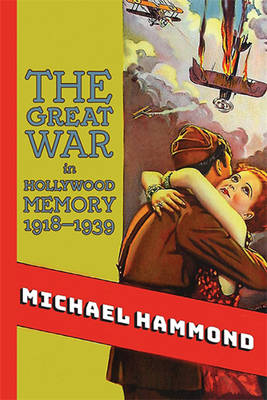
- Retrait gratuit dans votre magasin Club
- 7.000.000 titres dans notre catalogue
- Payer en toute sécurité
- Toujours un magasin près de chez vous
- Retrait gratuit dans votre magasin Club
- 7.000.0000 titres dans notre catalogue
- Payer en toute sécurité
- Toujours un magasin près de chez vous
Description
Assesses how America's film industry remembered World War I during the interwar period.
This is the definitive account of how America's film industry remembered and reimagined World War I from the Armistice in 1918 to the outbreak of World War II in 1939. Based on detailed archival research, Michael Hammond shows how the war and the sociocultural changes it brought made their way into cinematic stories and images. He traces the development of the war's memory in films dealing with combat on the ground and in the air, the role of women behind the lines, returning veterans, and through the social problem and horror genres. Hammond first examines movies that dealt directly with the war and the men and women who experienced it. He then turns to the consequences of the war as they played out across a range of films, some only tangentially related to the conflict itself. Hammond finds that the Great War acted as a storehouse of motifs and tropes drawn upon in the service of an industry actively seeking to deliver clearly told, entertaining stories to paying audiences. Films analyzed include The Big Parade, Grand Hotel, Hell's Angels, The Black Cat, and Wings. Drawing on production records, set designs, personal accounts, and the advertising and reception of key films, the book offers unique insight into a cinematic remembering that was a product of the studio system as it emerged as a global entertainment industry.
Spécifications
Parties prenantes
- Auteur(s) :
- Editeur:
Contenu
- Nombre de pages :
- 320
- Langue:
- Anglais
- Collection :
Caractéristiques
- EAN:
- 9781438476971
- Date de parution :
- 01-12-19
- Format:
- Livre relié
- Format numérique:
- Genaaid
- Dimensions :
- 157 mm x 231 mm
- Poids :
- 517 g

Les avis
Nous publions uniquement les avis qui respectent les conditions requises. Consultez nos conditions pour les avis.






